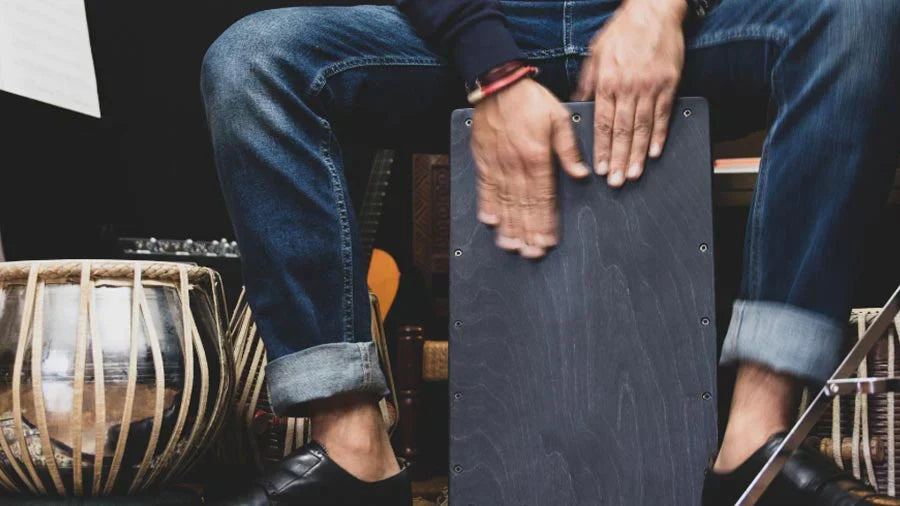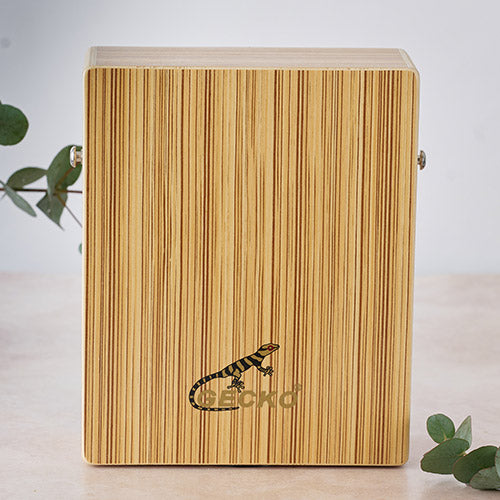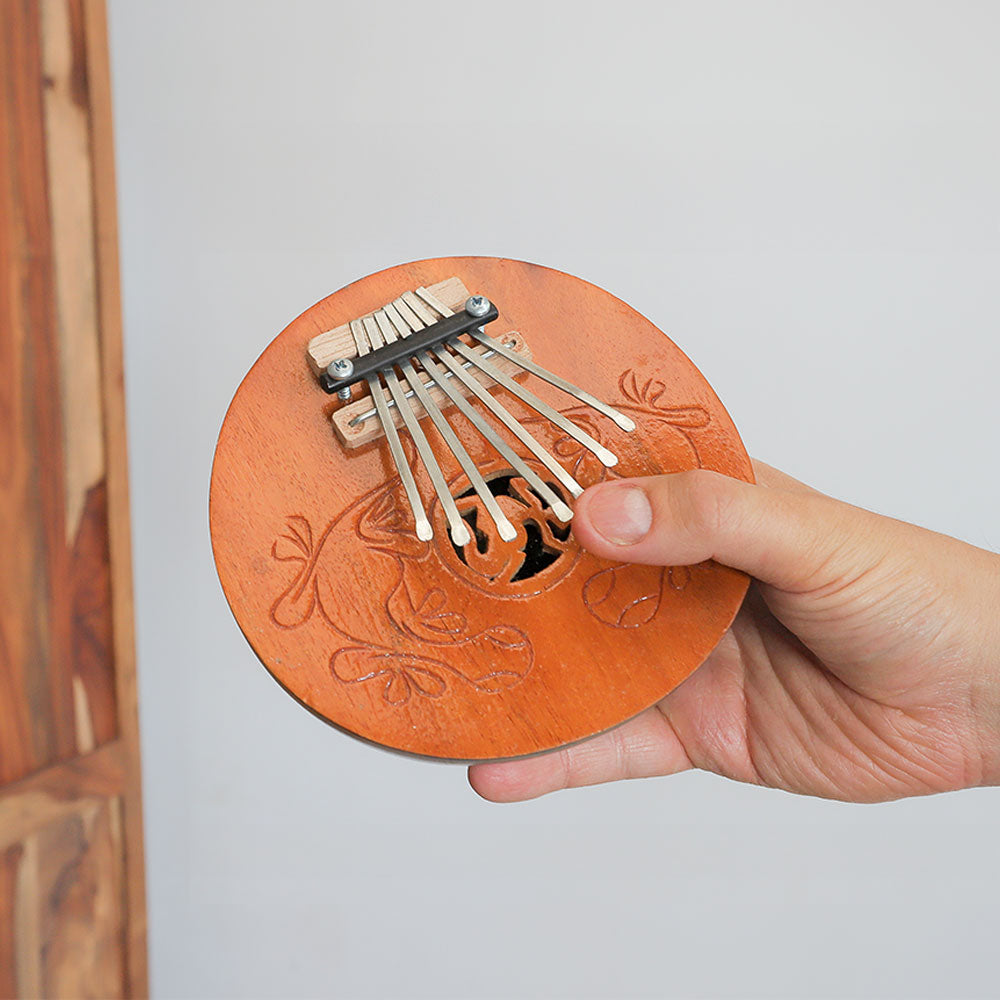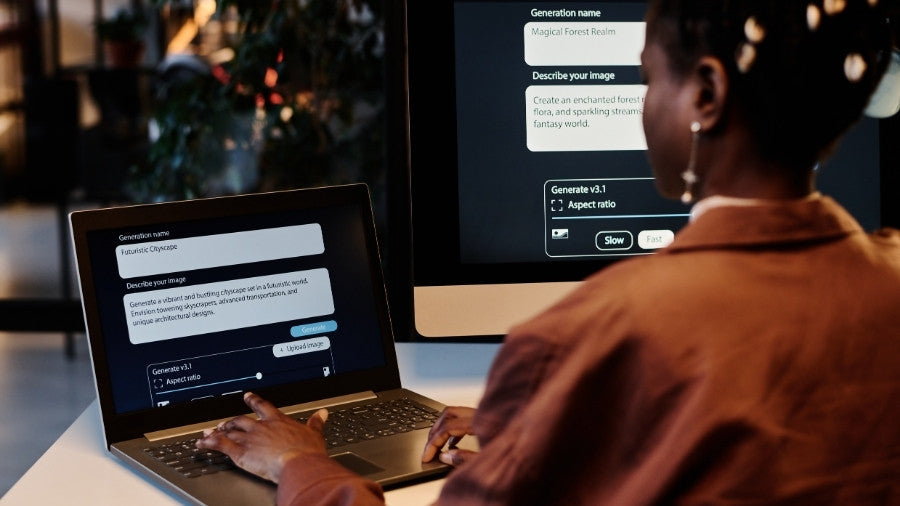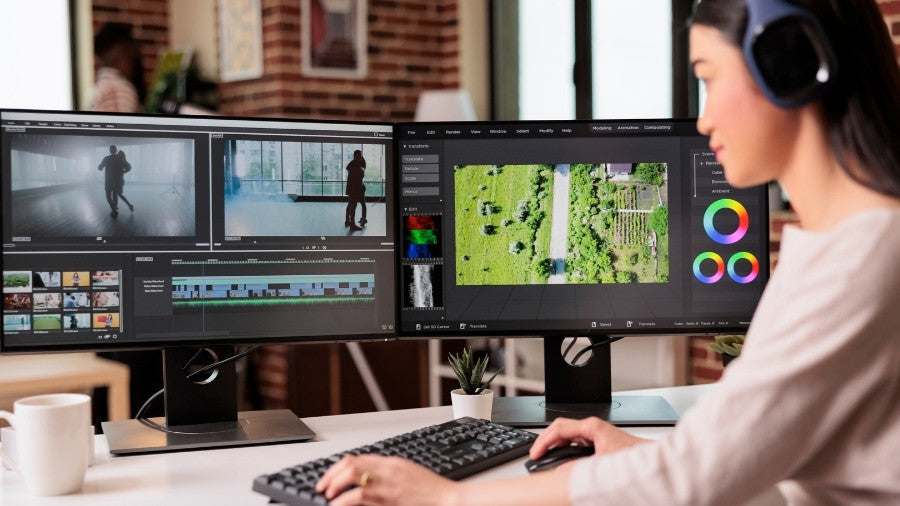A Cajon drum is a percussion instrument originating from Peru, consisting of a wooden box that is played by slapping the front or sides with the hands or implements to produce rhythmic sounds.
The history and origin of the Cajon drum

The history of the Cajon Drum begins with African people who were forcibly brought to Peru during the colonial era. Stripped of their native instruments, they ingeniously repurposed wooden shipping crates into percussion instruments, creating the Cajon. The Cajon Drum has its roots firmly planted along the coast of Peru, particularly in regions with significant Afro-Peruvian populations like Lima and El Callao. It draws from African rhythms, indigenous influences, and Spanish colonial culture.
Cajon Drum Uses
The Cajon Drum is used in a wide range of musical genres, including Afro-Peruvian, flamenco, jazz, rock, pop, and world music. Its versatility makes it an essential tool for creating rhythms, whether in acoustic performances or amplified setups. Musicians use the Cajon for its deep bass and crisp snare sounds, which can mimic a drum kit, making it ideal for intimate settings, street performances, and studio recordings. Its compact size and portability further enhance its appeal for live shows and jam sessions.
Cajon Drum Buying Guide for Beginners
When selecting a Cajon Drum, you should consider various factors such as compatibility with your musical style, your performance requirements, the quality of construction, and the materials. Prioritise a sturdy build and woods that enhance resonance, such as birch, mahogany, or maple. The playing surface of the Cajon, whether equipped with snare wires, strings, or a combination of both, significantly affects the sound character, providing versatility in tonal options.
The size and portability of the Cajon should also be considered, particularly if you plan to transport it for gigs or rehearsals. Try out various Cajons to find the one that best suits your playing style and desired sound, whether you prefer traditional Afro-Peruvian tones or modern adaptations for contemporary music genres.
Where to Buy a Cajon Drum?
★★★★★ - "Highly recommended. Absolutely as advertised, friendly prompt service". - Verified Buyer
A Cajon drum is a versatile and portable percussion option suitable for various musical styles and settings. Its compact size makes it easy to transport and store, while its unique sound adds depth and rhythm to performances. Whether you're a beginner looking to explore percussion or a seasoned musician seeking new sounds, the Cajon drum provides an accessible and engaging way to enhance your musical expression.
Buy the Portable Gecko Cajon Drum here.
Cajon Drum - Frequently Asked Questions
How is a Cajon drum played?
The Cajon drum is played by sitting on top of it and striking the front surface with the hands or fingers. Different sounds and tones can be achieved by varying the striking technique and position on the drum's surface.
What are the main parts of a Cajon drum?
The main parts of a Cajon drum include the front striking surface, which is typically made of thin plywood or hardwood, and the resonant box body, which is usually made of thicker wood. Some Cajons also feature snare wires or strings inside the drum to produce a snare-like sound.
What styles of music can be played on a Cajon drum?
Cajon drums are versatile instruments suitable for various music styles, including flamenco, jazz, rock, pop, and world music. They are often used in acoustic settings and are popular among singer-songwriters and percussionists.
Are there different sizes and types of Cajon drums?
Yes, Cajon drums come in various sizes and types, including standard Cajons, mini Cajons, and Cajon pedals. Additionally, there are Cajon drums with adjustable snare systems or built-in bass pedals for added versatility.
Can I customize or modify my Cajon drum?
Yes, many Cajon drums can be customized or modified to suit individual preferences. This can include adding or adjusting snare wires, changing the striking surface material, or installing additional features like bass pedals or percussion accessories.
How do I care for and maintain my Cajon drum?
To maintain your Cajon drum, keep it in a dry environment away from moisture, humidity, and extreme temperatures. Clean the drum's surface regularly with a soft cloth, and inspect it for any signs of damage or wear. Store your Cajon in a protective case when not in use to prevent dust accumulation and potential damage during transportation.

